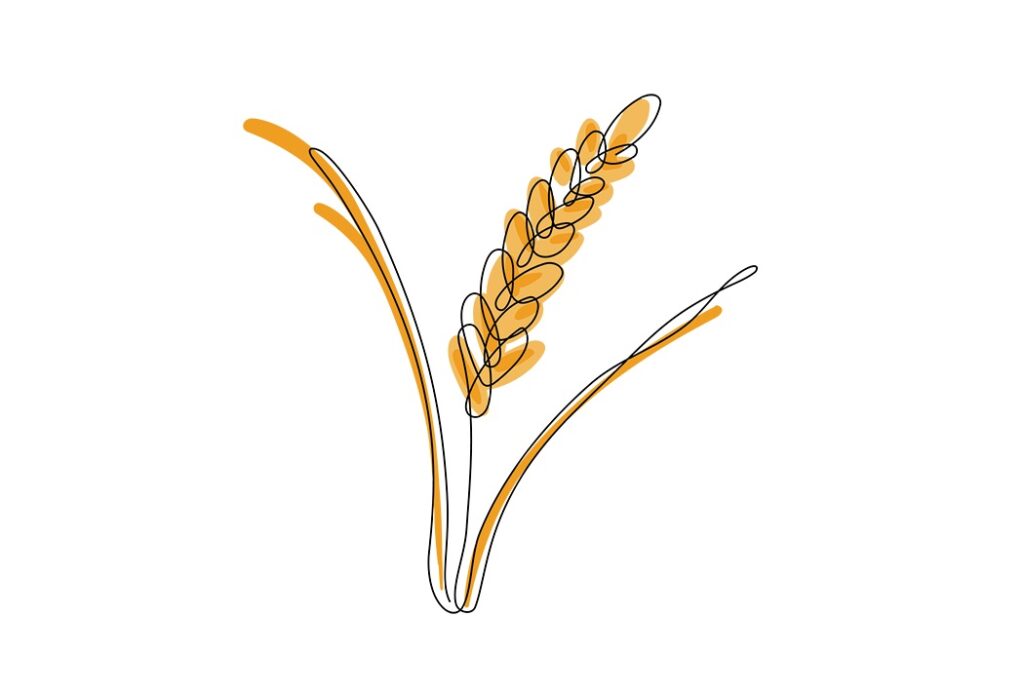Whole Grains Month

September is Whole Grains Month, where we celebrate the goodness of Ontario whole grains. Ontario farmers grows barley, corn, oats, soybeans and wheat, and all five of these grains can be consumed as whole grain.
What is a whole grain?
A whole grain is a grain that still contains all three parts: the bran, the germ and the endosperm. The bran is the outer layer of the grain, which contains fibre as well as some vitamins and minerals. The germ is the part of the grain that supports the growth of a new plant, and it is rich in healthy fats, vitamins, and minerals. Finally, the endosperm contains mainly starch (carbohydrate), as well as some protein, vitamins and minerals.
Why eat whole grains?
The reason whole grains are so important is because when the grains contain all three parts, that means all the necessary nutrients, vitamins and minerals are also present. When choosing to eat whole grain foods, you know your getting all the nutrients you need from the grains in those foods. Foods that have been refined (such as white pasta and white flour) have had some or all of the bran and germ portions of the kernel removed. Although some vitamins and minerals get added back through enrichment, whole grains contain more fibre and nutrients than their refined counterparts. Studies have shows that whole grain foods can help reduce your risk of heart disease, diabetes, and some cancers while also aiding in healthy digestion.
30 facts, tips and tricks for Whole Grain Month
- How can you know that you are getting whole grains? Check the ingredient list on the food package and look for the words whole grain in front of the name of the grain. The whole grain should appear as one of the first ingredients in the list. For more information, visit: hc-sc.gc.ca/fn-an/nutrition/whole-grain-entiers-eng.php.
- Breakfast: Try Oatmeal in a Jar, whole grain cereal, whole grain toast, whole grain bagels or oatmeal pancakes.
- Eating for heart health includes the consumption of whole grains. Whole grains can reduce the risk of developing heart disease. It has also been proven to lower cholesterol to reduce the risk of stroke.
- Consuming complex carbs such as whole-grain toast, whole-grain pasta, rolled oats and hull barley can in fact help with weight management.
- Whole grain foods are an excellent source of fiber. Fibre helps to maintain digestive health and improve heart health.
- Improve your heart and brain health with our whole grain Blueberry baked oatmeal.
- Dinner: Enjoy whole grain rolls, try a barley salad, have brown rice instead of white rice, try whole grain pasta or add barley into your soups and stews.
- Whole grains are packed with essential nutrients that can be hard to get from other food groups, like iron, fibre and B vitamins, they also help reduce blood cholesterol, may lower the risk of heart disease and keep you fuller longer.
- Check your plate for whole grains! Health Canada recommends to fill half your plate with fruits and vegetables, a quarter with lean proteins and a quarter with whole grains.
- Whole grains = whole lotta snacks. Try mixing your favourite whole grain together to make Protein Power Balls.
- It is recommended that children consume at least half of their daily servings of grain products as whole grains, this ends up being 3 ounces of whole grain per day (Academy of Nutrition and Dietetics).
- The excellent part about Whole grain granola is that it features two whole grains: wheat and oats. Whole grains include all three parts of the grain (bran, endosperm and germ) so you’re getting all the good nutritional benefits from the whole grain wheat and oats in this one meal.
- Only 8% of Canadian seniors consume 4 or more grain-based products daily.
- A bushel of wheat makes about 42 pounds of pasta or 210 servings of spaghetti.
- Whole grain barley, is packed full of necessary nutrients like protein, iron, fibre, magnesium, riboflavin and can make very tasty dishes like risotto or stuffed peppers.
- Gluten is a type of protein that’s found in wheat, rye, barley and foods made from these whole grains. It gives elasticity to baked goods, which provides the chewy texture that we all know.
- There are 30 different essential vitamins and minerals that play an important role in keeping you and your family healthy and your bodies functioning properly. The human body, however, does not produce these nutrients on its own, and these nutrients must be obtained through our diets like the inclusion of whole grains.
- Whole grain barley as a grain is high in fibre and carbohydrates, which your body needs to produce energy.
- Want to make a simple change to add more whole grains into your diet? Try choosing whole wheat options when buying bread, wraps, pasta or crackers!
- Due to fibre content, whole grains help support healthy digestion by feeding your gut beneficial bacteria.
- Ontario oats are used to produce oat flakes and flours used in cereals and cereal bars. Most of these oats are produced in Northern Ontario; the climatic conditions in Northern Ontario produce a higher quality oat more suitable for the milling industry.
- One bushel of wheat typically contains around 1 million individual kernels. That’s enough wheat for 60 pounds of whole-wheat flour , or 90 one-pound loaves of whole wheat bread!
- Eating whole wheat bread is a staple for many grain lovers, but have you tried to make your own? Our Oat and whole wheat bread recipe are extremely tasty and can keep for days after it is baked!
- Although the centre of origin is not known, barley has been gathered or cultivated for thousands of years in the Middle East, Far East, North Africa and east-central Africa.
- Looking for a simple and delicious whole grain meal? Try this simple and refreshing whole grain salad for a tasty side dish, light meal or addition to a potluck!
- Wheat berries are actually the whole wheat kernel that hasn’t been shelled or processed in any way. They look like rice, and can be ground up into flour for homemade baking, and can be used in many grain-based dishes as an alternative to rice or barley while still maintaining the beneficial nutrients and nutty flavour we love so much from our whole grains.
- Grains can be stored for a long time as long as they remain dry and cool.
- There are two kinds of fibre: soluble and insoluble. Soluble fibre may help to manage blood glucose (blood sugar) levels and may help to lower bad cholesterol. Insoluble fibre helps to aid in digestion.
- Homemade whole wheat pizza dough is great to create a home cooked meal that starts with the goodness of grains. Want to add more whole grain goodness to your recipe? Add wheat bran for a fibre boost.
- Ontario grains are delicious, smart and incredibly nutritious for us to eat. Try incorporating Ontario grains into your meals using our recipe library, Good in Every Meal.



